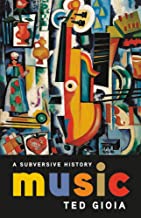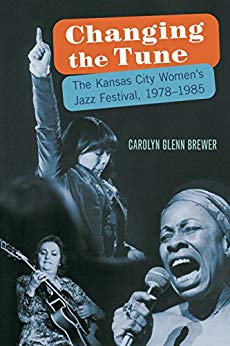Thelonious Monk: The Life and Times of an American Original
By Robin D.G. Kelley
The Free Press, New York, 2009;
608 pp.; $30 hardcover
 Early on in the pages of Thelonious Monk: The Life and Times of an American Original, Robin D. G. Kelley explains where the name “Thelonious” may have originated. Saint Tillo was a Benedictine monk who was kidnapped and forced to work as a slave. He was eventually ransomed and went on to work as a missionary in and around France. He lived out his later years as a recluse. “Thelonious” is the Latin form of “Tillo,” and according to one baby name website, it means ruler of the world. Yet Monk, as Kelley makes abundantly clear, was a black man who grew up in pre-civil rights era America. He certainly wasn’t supposed to rule anything, but Kelley’s depiction makes it easy to imagine that Monk may have disagreed.
Early on in the pages of Thelonious Monk: The Life and Times of an American Original, Robin D. G. Kelley explains where the name “Thelonious” may have originated. Saint Tillo was a Benedictine monk who was kidnapped and forced to work as a slave. He was eventually ransomed and went on to work as a missionary in and around France. He lived out his later years as a recluse. “Thelonious” is the Latin form of “Tillo,” and according to one baby name website, it means ruler of the world. Yet Monk, as Kelley makes abundantly clear, was a black man who grew up in pre-civil rights era America. He certainly wasn’t supposed to rule anything, but Kelley’s depiction makes it easy to imagine that Monk may have disagreed.
Not only does Kelley situate Monk within the social and political context of black America, as well as offer a detailed glimpse of Monk the man. He also provides rich background into some of Monk’s most significant personal and professional relationships.
Mother
Born in Rocky Mount, North Carolina on October 10, 1917, Thelonious Monk, Jr. was the second of three children born to Barbara and Thelonious Monk. According to Kelley, Monk adopted the middle name “Sphere” in honor of his maternal grandfather Speer Batts, a fiddler from Deep Creek, North Carolina. Overwhelmed by the responsibility of primary breadwinner in a city with few opportunities, Monk’s mother Barbara decided to move with all three children to New York in pursuit of a better life. Monk was four.
He lived with his mother until he finally married just one month shy of his 31st birthday. The support Barbara provided was so well-known throughout the jazz community that one writer went so far as to criticize her for Monk’s perceived failings as a musician. When Barbara died in 1955, many began to notice Monk’s mental unraveling. He was institutionalized for the first time shortly after the one-year anniversary of his mother’s death.
Musicians and Critics
Kelley devotes a good section of the book to Monk’s musical pursuits and professional relationships. While Monk was developing as an artist, he’d spend time working with artists such as Bud Powell, Charlie Rouse, Wilbur Ware, Kenny Clarke, Sonny Rollins, Randy Weston, Mary Lou Williams, Art Blakey, Roy Haynes, Miles Davis, Charlie Parker, Coleman Hawkins and Dizzy Gillespie, to name a few. Monk had earned a reputation as an innovator — one who wrote some of the most beautifully complex music and who also took the time to encourage and mentor many musicians who sought out his guidance. Yet some of these musicians seemed interested only in what they could take from Monk.
[pullquote]A lot of the words that have come to define Monk — eccentric, weird, childlike, unaware, unschooled — came from critics, and Kelley takes aim at many of their underlying assumptions.[/pullquote]
Kelley describes a time when Monk’s protégé and friend Bud Powell worked in the band of Cootie Williams. Eager to have Williams add some of Monk’s music to the repertoire, Powell was said to have insisted that either the music be added or he would quit. Williams eventually selected Monk’s “’Round Midnight.” He decided to record the song, adding a section with lyrics penned by Bernie Hanighen. Williams and Hanighen went on to file for co-composer credit. Although Williams is the only musician ever to record the song with the section he added, to this day, according to Kelley, Monk’s estate receives only a third of all royalties for “’Round Midnight.” Tenor player Teddy McRae did something similar when, after offering to help Monk find a publisher for a couple of his songs, he took co-composer credit for both songs.
Kelley also discusses how Monk worked with Dizzy, Miles and Bird early in their careers, offering advice on music and furnishing concepts that would modernize the music. He even lobbied clubs and bandleaders about gigs for Bud Powell. Dizzy, Miles and Bird prospered financially from this new direction in music and Powell received offers for work, while Monk was passed over. The musicians often performed Monk’s music on recordings and in club settings, but Monk had a bad reputation as a result of soured working relationship with club owners. Instances of excessive lateness and a defiant attitude placed Monk so low on the musical totem pole that he was sometimes denied entry to the very clubs where his music was performed.
Critics weren’t much better. According to Kelley, the celebrated Leonard Feather, in his book Inside Be-bop, asserted that Monk lacked technique and that his place in jazz had been grossly overstated. A lot of the words that have come to define Monk — eccentric, weird, childlike, unaware, unschooled — came mostly from critics, and Kelley takes aim at many of their underlying assumptions. The start of the avant-garde movement is when Monk’s fortunes began to turn. Suddenly there was something critics could describe that was weirder than Monk.
Nellie
Of all the topics covered in Kelley’s biography, none is more compelling than Monk’s relationship with his wife, Nellie.
There’s no question that Monk experienced a lot of good and bad, but Nellie was there through it all. When things grew difficult financially, Nellie worked and provided for the family. When Monk battled with himself, Nellie was there to be a familiar face and a source of comfort. She handled Monk’s contracts and licensing issues even though she didn’t have the knowledge or background to do so. She fielded off bootleggers and concert promoters that she thought tried to take advantage of Monk. When it all became too much to bear, rather than throwing in the towel, Nellie sent the kids to live with her sister-in-law or her own sister, so that she could give more of herself to Monk.
Nellie’s health was always an issue, but she never left even when it might have made sense for her to do so. Therefore, when Kelley describes what led Monk to walk out on Nellie and the family around January 1973, it’s difficult to understand. (Nellie remained in Monk’s life, traveling between New York and Nica’s house in New Jersey to care for him as best as she could under the circumstances, until the day he died in 1982.)
Nellie became a bit of a health fanatic following one of Monk’s institutionalizations. One doctor mentioned that new medication, along with a better diet, could help improve Monk’s chemical imbalance and overall health (in addition to the chemical imbalance, Monk suffered from an enlarged prostate, hepatitis and urinary incontinence). Having had abdominal problems most of her adult life, Nellie turned to juicing not only for Monk’s benefit but also her own. Before long she was helping everyone she could by making freshly squeezed concoctions well into the night most every night, and Monk didn’t like it.
According to Kelley, Monk had become so dependent on Nellie that he was beginning to feel neglected when she attended to anyone else. But what about Nellie and what she felt? What about the arrests, one of them stemming from Monk’s decision not to snitch on Bud Powell, who’d thrown a bag of heroin at his feet in front of the police? Did he think about how not snitching and his subsequent absence would impact his family? Did he think about how overwhelming his problems and his behavior may have been? After everything she endured with him, he left because she wanted to make celery juice for strangers? That Kelley would offer the “neglected” defense as justification for Monk’s behavior is rather lame.
The children
Monk’s relationship with his children, nieces and nephews isn’t given as much attention, probably because a good part of their lives were spent either at boarding school or with aunts while Monk was struggling to make a name for himself. The nieces and nephews came around whenever their “Uncle Bubba” was available for visits. Kelley recounts occasions when they’d accompany their parents to the clubs to hear Monk play. Instead of introducing them to great musician x or great musician y, Monk treated the children as the important ones. They, to Monk, were the ones worth knowing.
When Monk learned of his own son’s interest in the drums, he went straight to Max Roach seeking an instructor, although there was a time when he chose to hire a drummer, Leon Ndugu Chancler, who was close in age to his own son (and would go on to drum for Weather Report), despite the fact that T.S. Monk had been practicing and hoping for an opportunity by that time. (Monk did eventually hire his son in early 1971. The two worked together until Monk stopped performing, sometime during the mid to late 1970s.) Nonetheless, Monk supported the kids’ desires to be whoever they wanted to be. There was only one exception and that was Monk’s nephew Ronnie, who died of a heroin overdose. Monk disapproved of Ronnie’s involvement with drugs and he made sure all of the children knew as much.
Nica
Monk developed another significant relationship with Baroness Pannonica “Nica” de Koenigswarter. As is well known, Nica was a fan and friend to many jazz musicians. She was so enamored of them that she cared very little when her family disinherited her over the constant embarrassment of her presence around these black male musicians. Racism was very prevalent when Nica began her friendship with Monk in the 1950s. She was a recently divorced baroness, and instead of falling in line with societal expectations, she immersed herself in the life and the culture of those she loved.
She showered Monk with gifts and stepped in when Nellie wasn’t able to do so. She paid Monk’s medical expenses when she could, and decorated her New Jersey home with him in mind, purchasing a piano and ping-pong table for Monk’s entertainment. She even allowed him to live the last few years of his life with her after he left his family. Though her behavior at times on the day she helped Monk move out of his home with Nellie makes her read more like an aspiring mistress than a friend, Kelley offers that the relationship between Monk and Nica was never romantic. But the fact that Nica’s whole life had become jazz, and that she was always so readily available, did seem to encourage rather than dispel suspicion. At the very least, she seemed to have feelings for Monk that went beyond friendship.
More than just delving into Monk’s relationships, Kelley explores many technical details of Monk’s music via the audio and video recordings from Monk’s personal collection to which he gained access. Kelley’s music background and piano training serves the book well, as he describes everything from swing beats and waltzes to solfeggio, ostinatos, tremolos, allegros and adagios. In the appendix, Kelley also gives a detailed list of Monk’s original compositions, offering insight into how often Monk recorded certain songs, which chords and melodies Monk borrowed as inspiration for his own compositions, and what events and ideas influenced some of his song titles. The intricacies are dizzying at times, but Kelley’s approach is highly respectful. Whatever there is to know about Monk can probably be found somewhere within these pages. But given all that Monk has done for jazz, anything less would have been an injustice.





